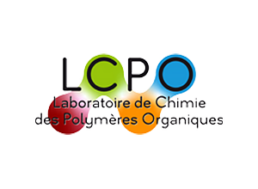Laboratories
LP2N
LP2N is a Joint Research Unit (UMR 5298) of the Institut d’Optique Graduate School, the University of Bordeaux and the CNRS. It is one of the components of the Bordeaux site of the Institut d’Optique within the Institut d’Optique d’Aquitaine, where training, research and innovation coexist. LP2N is structured around 7 dynamic groups conducting fundamental and applied research, supported by specialised, high-performance technical services. LP2N’s research activities are cross-disciplinary in optics and photonics, with a wide range of applications.
They are structured around 5 research areas :
- Quantum systems and applications (Area I)
- Photonics in micro and nanostructures (Area II)
- Innovative imaging and quantitative biology (Area III)
- Computational optics (Area IV),
- Coherent light science and metrology (Area V), plus a significant number of partnerships, in particular through two joint laboratories with companies (iXblue and AzurLight Systems).
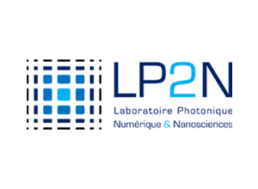
CELIA
The CEntre Lasers Intenses et Applications (CELIA) is a joint research unit (UMR5107) associated with the University of Bordeaux, the CNRS and the CEA. CELIA has a staff of around 90, including 37 permanent researchers and teacher-researchers and 17 permanent technical staff. The laboratory is made up of 5 groups carrying out fundamental and applied, experimental and numerical research in the following areas :
- Intense ultrashort lasers with high average power
- Attoscience and ultrafast dynamics in matter
- The physics and dynamics of hot plasmas (High Energy Density and Ultra High Intensity): X sources by plasmas, relativistic particle acceleration, astrophysics in the laboratory, fusion by inertial confinement
- Femtosecond laser processes
The laboratory is organised as a platform for access to its light lines (IR, EUV and X-ray laser servers) at European level via LaserLab-Europe and at national level via the “Femto sources and lines” call.
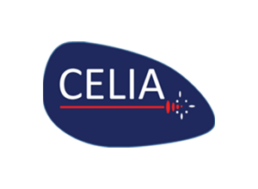
LOMA
The Laboratoire Ondes et Matière d’Aquitaine (LOMA) is a joint research unit (UMR5798) of the Centre National de la Recherche Scientifique (CNRS) and the University of Bordeaux. The laboratory is organised into three research teams: Soft Matter and Biophysics, Photonics and Materials, and Theory of Condensed Matter. LOMA can count on technical services covering its needs in Electronics, Mechanics, Optics, Computing and Administration.

LP2i
The Laboratoire de Physique des 2 Infinis Bordeaux (LP2I, ex-CENBG) is a Joint Research Unit (UMR 5797) under the supervision of the University of Bordeaux and the CNRS. Its research focuses on nuclear physics, particle physics and interdisciplinary activities related to the use of nuclear techniques at the interface with laser physics, the environment, health and energy. The LP2I groups are involved in national and international collaborations with major instruments, as well as in thematic networks that are strongly anchored in the policy of the Bordeaux site. They benefit from the presence of 3 technical platforms on the LP2I site for the analysis and irradiation by light ion beams, the measurement of very low radioactivity and the measurement of rare gases. The laboratory relies on the strong skills and know-how of its technical services.
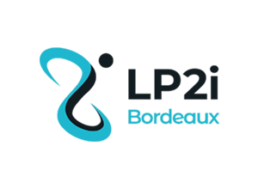
IINS
The core mission of IINS is to contribute to the basic understanding of the central nervous system function. With this endeavor in mind, we set as an associated objective to develop innovative approaches along our scientific projects and disseminate these through technology transfer. We also aim to contribute, whenever possible, to identify new therapeutic targets and develop new therapeutic strategies for neurological and psychiatric disorders. Currently studied pathologies include Alzheimer’s and Huntington’s diseases, epilepsy, intellectual disability and autism spectrum disorders. Altogether, we represent a unique assembly of expertise, from structural biology (Elegheert) to integrated physiology and behavior (Gambino, Humeau, Mulle,Roux, Takahashi), through cell biology and chemical biology (Choquet, Giannone, Groc, Perrais, Thoumine), and imaging (Nägerl, Sibarita, Studer), with relatively focused scientific interests around excitatory neurotransmission in the brain. This unique combination of joint scientific interests with strong diversity of approaches allows for IINS to be a highly integrated and collaborative environment.
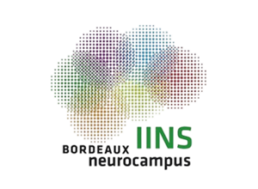
IBGC
The Institute of Cellular Biochemistry and Genetics is attached to the Department of Biological and Medical Sciences of the University of Bordeaux and to the National Institute of Biological Sciences (INSB) of the CNRS. The IBGC is composed of 12 teams with a strong identity centered on research in fundamental biology and on particular topics such as cell division, genome maintenance, chromosome segregation, mitochondria and energy metabolism. The diversity of the model organisms used (the yeasts S. cerevisiae and S. pombe, the fungus P. Anserina, the fly D. melanogaster and the nematode C. elegans as well as rodent (mouse and rat) and human models) and the complementarity of the know-how in cell biology, genetics and biochemistry are its strengths.
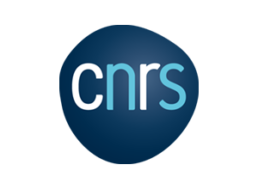
ISM
The Institut des Sciences Moléculaires (ISM) brings together a community of organic and physical-chemical researchers interested in molecular structures, and working on their design, synthesis, characterisation, reactivity and analysis in various environments.
The Institute’s expertise is based on a number of key skills: i) theorists in quantum chemistry and molecular and reaction dynamics, ii) synthetic organic chemists, iii) physical-chemical experimenters (spectroscopy, photochemistry, molecular recognition and analysis). The ISM is a CNRS/Université de Bordeaux/Bordeaux INP Aquitaine Joint Research Unit, part of the Aquitaine Regional Delegation (DR 15).
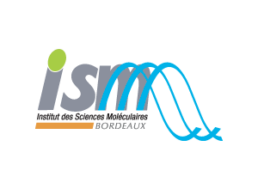
ICMCB
The Bordeaux Institute of Condensed Matter Chemistry (ICMCB – UMR5026) is a joint research unit of the CNRS, the University of Bordeaux and Bordeaux INP. The ICMCB, a laboratory with a staff of around 280, focuses its research on three key areas: Solid State Chemistry, Materials Science and Chemistry & Processes. In addition, the ICMCB is entering the era of data science and artificial intelligence (AI) to accelerate the discovery of new materials and the development of sustainable processes. The laboratory is structured into 7 research groups, 15 collective scientific and technical departments and 6 support function departments. The ICMCB’s research activities focus on the development of new concepts in the materials value chain, to synthesise, shape and recycle new compounds and materials in a sustainable way, or compounds and materials with new properties to meet the challenges facing our society. Among the families of materials studied at the ICMCB, namely inorganic materials, inorganic-organic hybrid materials and molecular materials, emerging materials will see the light of day, in the hope that they will become innovative, particularly for energy, sustainable development, health, electronics and photonics.

CRPP
The Paul Pascal Research Centre is a joint research unit of the CNRS and the University of Bordeaux (UMR 5031). The laboratory focuses its research on soft matter, functional or molecular materials, bioengineering and biotechnologies. The CRPP is organised into 6 teams comprising chemists, biochemists, physical chemists and physicists. The CRPP’s strength lies in the chain of skills it has built up from the basic building block, the molecule, right through to assembly, shaping and characterisation of properties. The laboratory also has strong technical support, thanks to highly qualified technical staff and a large range of instruments, which the laboratory also opens up to the outside world thanks to a characterisation platform.
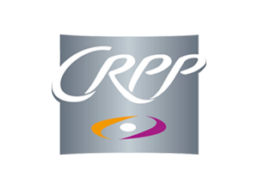
IMS
IMS Bordeaux is a renowned research laboratory that has gained recognition both nationally and internationally. The laboratory focuses on ten research themes including bioelectronics, cognitics, productics, signal and image, automatic, conception, reliability, nanoelectronics, waves, and organic. The laboratory emphasizes research where all the themes are interconnected.
The laboratory is at the forefront of technology, and its strong industrial partnerships enable IMS Bordeaux to be a major player in research in France.

I2M
Our research Institute includes a large range of topics related to research fields in mechanical engineering on the campus of the University of Bordeaux, France. Although the topics are of fundamental nature, they cannot be separated from the applications as well as from training activities in the field of mechanical engineering. Recognized and supported by the INSIS department of the CNRS since its creation, I2M is constantly in step with the major advances made in the field of mechanical engineering.
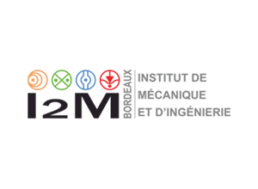
CBMN
Created in 2007, the Institute of Chemistry and Biology of Membranes and Nano-objects (CBMN) is a joint research unit of the CNRS (main INC, secondary INSB), the University of Bordeaux (Science and Technology Department for health) and the Institut National Polytechnique Bordeaux. The CBMN Institute is also associated with Bordeaux Science Agro. CBMN has around 200 persons (50% permanent and 50% non-permanent).
CBMN is a multidisciplinary institute and operates at the interface between Chemistry, Biology and Physics by hosting 16 research groups organized in four scientific domains :
- Chemical biology and Supramolecular chemistry (CBSC)
- Biomedical research: fundamental and translational (BioFAP)
- Multiscale Biophysics (MSB)
- Nutraceutical, Medical and Food applications of biomolecules (NMFAB)
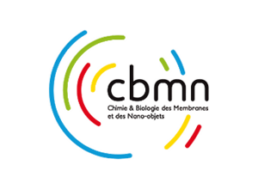
LCPO
Since its creation in 1985, the Laboratoire de Chimie des Polymères Organiques (LCPO) has focused its academic research in polymer science on polymerisation mechanisms and macromolecular engineering.
While these two areas remain the backdrop to our activity, major projects are geared towards the design of high added-value functional polymers and the study of their macroscopic properties for targeted applications, particularly in the life sciences, energy and technology fields. Green and biomimetic synthetic approaches and the understanding of structure/property relationships are at the heart of our scientific strategy.
